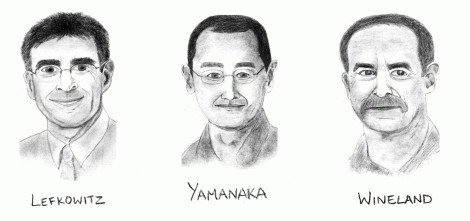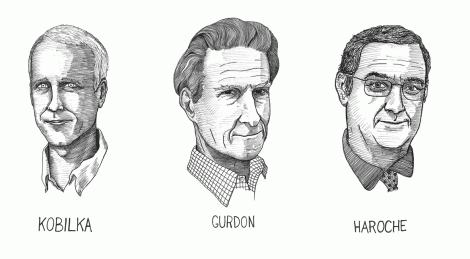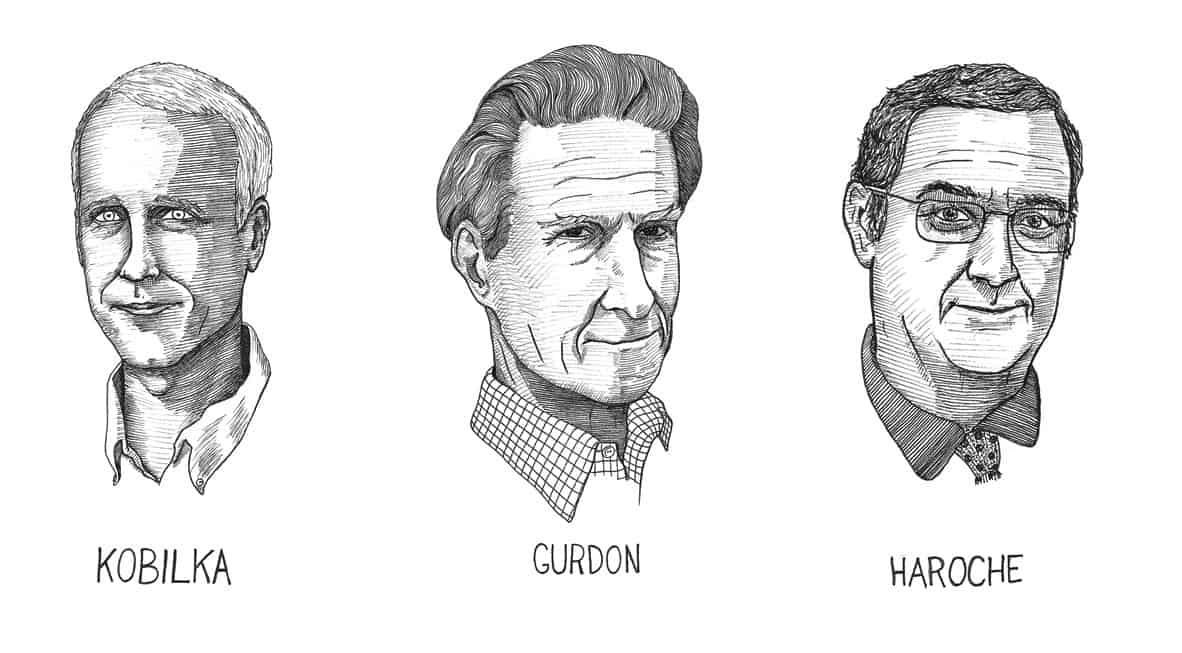Every crowd of enthusiasts has an annual event to get excited about: movie buffs have the Oscars, car lovers have Le Mans, and enthusiasts of science have the Nobel Prize declarations. Throughout the second week of October, the Nobel Prize Committee in Stockholm, Sweden, disclosed the names of the 2012 Nobel Prize laureates in Physiology and Medicine, Physics, and Chemistry.
On October 8, Sir John B. Gurdon and Shinya Yamanaka won the Nobel Prize in Physiology and Medicine. Gurdon and Yamanaka share the prize for their joint contributions to a method that reverses adult cells to pluripotent stem cells — cells with differentiating capabilities. In the 1950s, Gurdon discovered that mature cells retain the same genetic information they had as unspecified pluripotent cells, and in 1962, he demonstrated that a new organism could grow from the nucleus of an adult cell placed in a de-nucleated egg cell. “This started the entire revolution of cloning, eventually leading to the cloning of mammals” says Dr. Denise Belsham, a professor of physiology and medicine at the U of T. In 2006, Yamanaka was able to turn mature mouse skin cells into pluripotent stem cells by treating the adult cells with what Belsham calls “a cocktail consisting of a limited number of genes and proteins.” In 2007, Yamanaka used this same method to revert human adult skin cells to pluripotent cells.

CORINA WONG/THE VARSITY
Gurdon and Yamanaka’s research is profoundly significant in the area of regenerative medicine and the development of patient-specific cells. Though current procedures are efficacious, there is controversy surrounding the destruction of embryos and fetuses. Because Gurdon and Yamanaka’s methods circumvent these controversies, they may very well be the foundation for a therapeutic revolution. “Imagine creating a new organ from an existing skin cell by just adding a few developmental genes to the mix — this is remarkable,” Belsham says.
On October 9, Serge Haroche and David J. Wineland were declared the winners of the 2012 Nobel Prize in Physics. Haroche and Wineland are recognized for their development of experimental methods to measure and manipulate singular quantum systems. It was widely believed that single particles of matter or light could not be isolated from the environment without losing their quantum properties. Wineland quashed these speculations by probing ionic quantum states of beryllium ions, while Haroche trapped and observed photons using microwaves and mirrors.

CLAIRE SERINGHAUS/THE VARSITY
Besides substantiating the claims of theoretical quantum physics, Haroche and Wineland’s research may provide a basis for realizing quantum computing, a method of employing quantum properties to represent data. Because quantum particles can be in more than one state simultaneously, a quantum computer could process data simultaneously, enabling ultrafast complex computations. Although Haroche and Wineland have showed that quantum computing is possible by enabling manipulations in a single quantum system, much more research must be done before a multisystem quantum computer can be produced.
On October 10, Robert J. Lefkowitz and Brian K. Kobilka were declared the winners of the 2012 Nobel Prize in Chemistry. Before the work of Lefkowitz and Kobilka, the mechanisms that permitted cells to sense their environment were unknown. The laureates uncovered a family of receptors called G-protein-coupled receptors (GPCRs), which transmit biological messages and regulate most of a cell’s physiological processes. In 2011, Kobilka captured an image of one of these receptors being activated by a hormone via X-ray crystallography. Dr. Scott Prosser, associate professor of chemistry at the University of Toronto, explains that Kobilka’s recent success with is truly remarkable because X-ray crystallography normally only captures inactive states.
“Thanks to their work, we live in an era where we can now begin to make connections between biochemical signaling processes and the exquisitely complex molecular machinery — namely GPCRs — responsible for these processes,” says Prosser, who worked with Kobilka in 2009 on GPCRs. The laureates’ discovery has and will continue to provide insight into existing and potential medications, most noticeably in the pharmaceutical industry, since about half of all medications on the market target GPCRs. “There are 800 GPCRs out there and a world of chemistry and new discoveries awaits us,” Prosser says.


